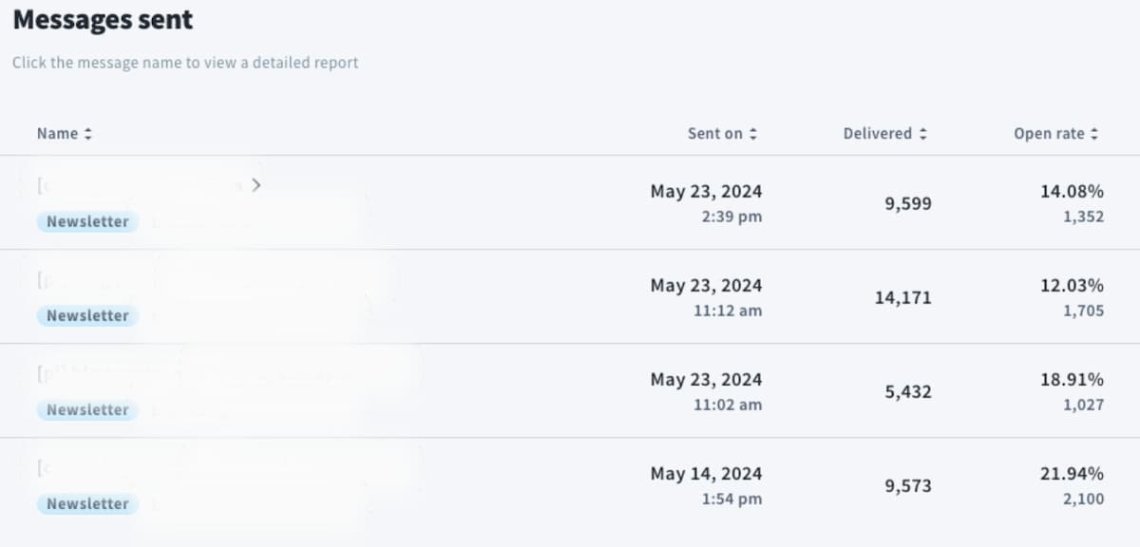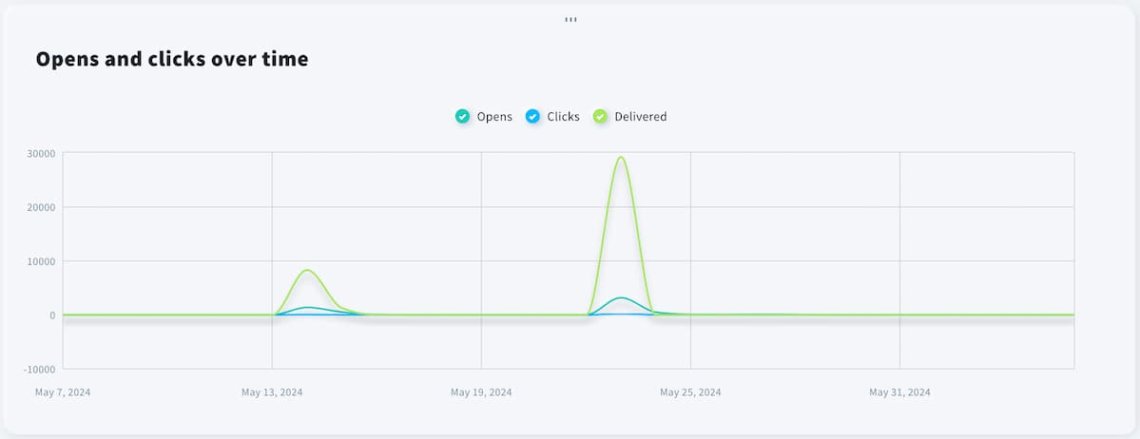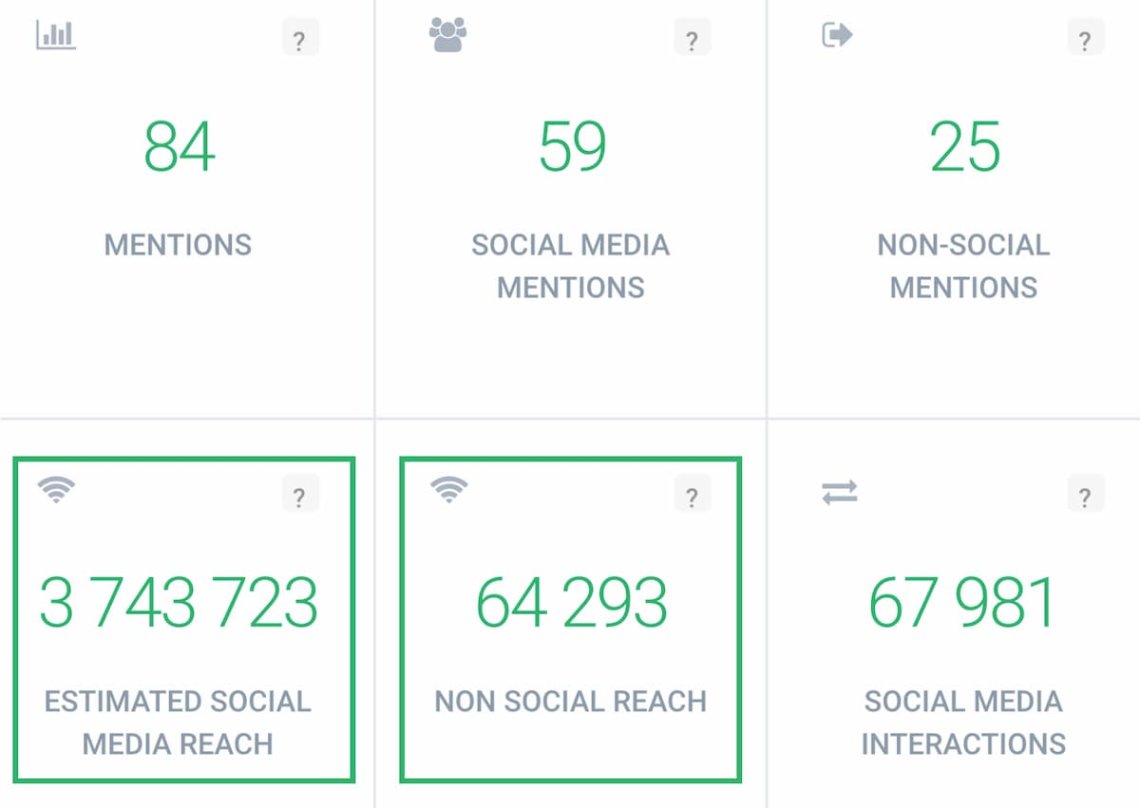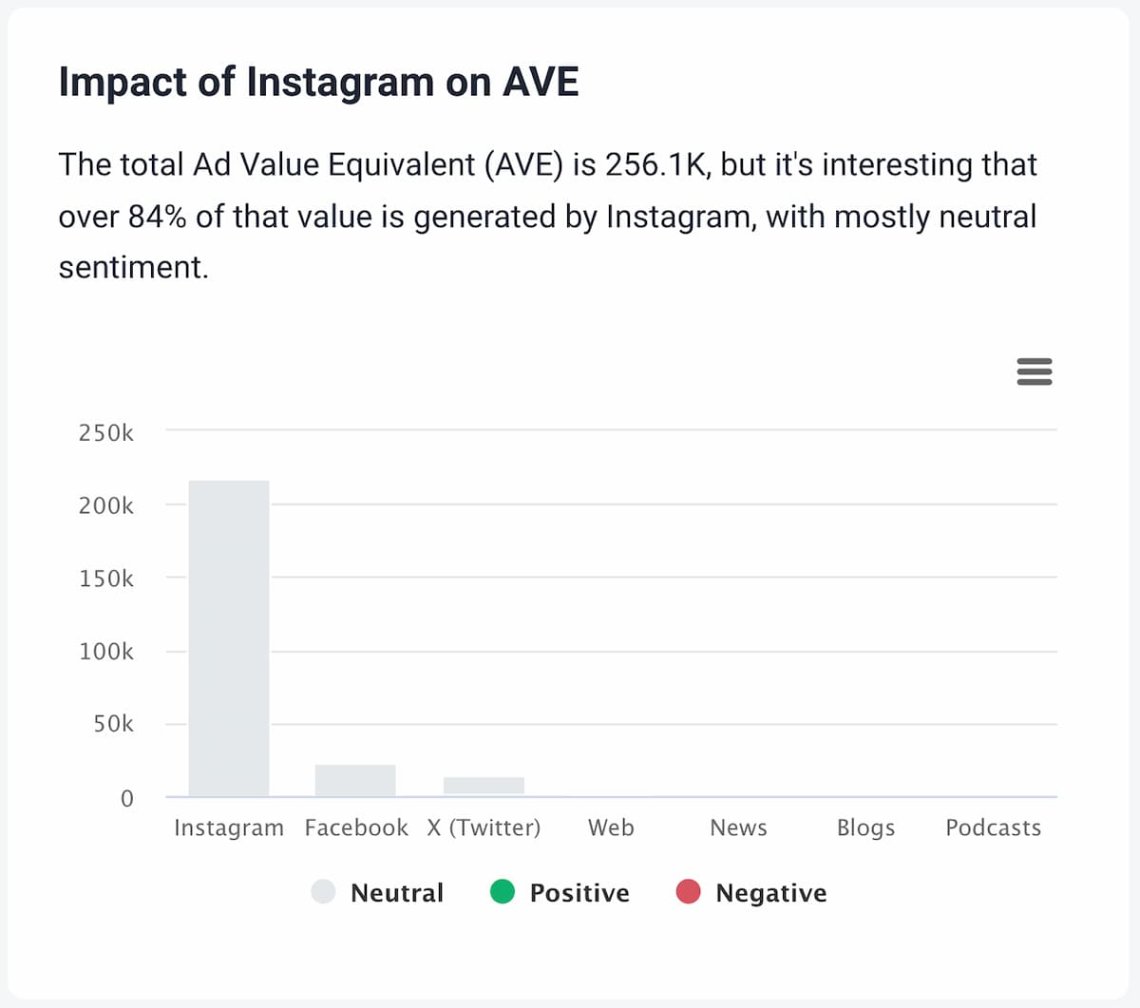7 Key Newsletter Metrics You Should Track in 2025
Table of contents
What if I tell you your newsletter can bring you over $240K in revenue annually? Yeah, it’s possible! The most successful newsletters like “Yolo Intel” reached this level thanks to a well-thought-out newsletter strategy built on tracking appropriate metrics. The question is – which newsletter metrics should you care about? After reading this article, you’ll know exactly!
Newsletter metrics are indicators that help understand the performance of your newsletter efforts. They include email newsletter metrics such as open rates and click-through rates. Some key metrics also measure the impact of your newsletter on overall brand visibility and awareness.
When you think about newsletters, you probably associate them with email content.
Indeed, email remains the most popular way to share newsletters with your audience. However, it’s not the only one!
Today, you can distribute your newsletter through various channels: email, social media profiles, your website, and more.
With this in mind, I’ve decided to take a broader look at newsletter metrics and present the top 7 metrics to track. These metrics will be helpful regardless of whether email is your only distribution channel.
Let’s get started!
Key newsletter metrics to track:
- Open Rate
- Volume of Mentions
- Unique Click-Through Rate
- Public Reach
- List Growth Rate
- Conversion Rate
- Advertising Value Equivalency
01 Open Rate
Let’s start with one of the most basic email newsletter metrics.
As the name suggests, Open Rate indicates the percentage of people who received your email newsletter in their inbox and decided to click on it to view the content.
Open Rate = Unique People Who Open Your Email / Total Number of Emails You Have Sent
Super simple, isn’t it?
Well… it is not. Because Open Rate is not a 100% reliable metric.
Wait, how is that?
While the concept of Open Rate is very straightforward, problems appear with email providers.
Email opens are often tracked by loading an image embedded in the content. And some email clients (or your inbox privacy settings) may block these images.
Moreover, email clients like Apple Mail are armed with more advanced privacy protection and prevent newsletter analytics tools from crawling their data.
That makes Open Rate only partially accurate. However, it shouldn’t make you ignore this metric.
Open Rates work as a benchmark for your email campaign. They’re a kind of barometer showing whether your efforts are fruitful or not.
For example, Open Rate is excellent for making A/B tests of your subject lines, sending times, and preview text. This helps you see which options get more people to open your emails.
By trying different things, you can find the best way to improve your email campaigns.

Track key newsletter metrics!
02 Volume of Mentions
If you want to succeed, you need to make sure there’s some noise around your newsletter.
Because your newsletter should be a part of a broader marketing strategy that increases brand visibility and strengthens your share of voice in your niche!
Therefore, the second of newsletter performance metrics you must track is the volume of mentions.
In short, the volume of mentions means how frequently people talk about your newsletter online.
The more people are exposed to your newsletter, the higher the chances they will subscribe and engage with it.
Tracking mentions helps you understand the reach and impact of your content in the online community.
And by increasing the volume of mentions, you can build a stronger presence and attract more readers to your newsletter.
How to measure?
Fine, but how to measure the volume of mentions?
Well, the most effective way is to leave this job to the professional social listening tool. Brand24 is a perfect match.
This tool acts like an AI-powered guard for your brand.
Imagine Brand24 looking like Arnold Schwarzenegger in his prime. No one would like to mess up with Arnold. Okay, maybe Chuck Norris, but only him.
So, Brand24 constantly monitors your project – whether the whole company or just the newsletter.
Namely, it discovers, tracks, and analyzes all the mentions about you or your newsletter.
I will show you this on the example of my favorite newsletter titled “3-2-1”.
James Clear is one of the most inspiring guys I – unfortunately – have never met. He’s the author of “Atomic Habits”, which is still one of the best self-development books ever written.
James also created the abovementioned newsletter “3-2-1”, which he always sends on Thursdays.

As you can see below, in just 30 days, James’ newsletter was mentioned exactly 64 times.
When you look at the Mentions chart, it’s obvious that the closer the Thursday is, the more frequently people discuss the “3-2-1” newsletter.

Wow, 420 people mentioned your newsletter!
03 Unique Click-Through Rate (Unique CTR)
The Unique Click-Through Rate (Unique CTR) is another crucial metric for measuring the quality of email newsletters. Besides, it’s my favorite indicator among all the newsletter engagement metrics.
Unique CTR = Unique Clicks / Total Number of Emails Delivered
From my personal experience, I find Unique CTR more relevant than regular CTR. But what’s the difference?
- Regular Click-Through Rate (CTR) measures the percentage of total clicks, including multiple clicks by the same recipient.
- Unique Click-Through Rate (Unique CTR) measures the percentage of email recipients who clicked at least one link in your email, regardless of how many times they clicked (unique clicks).
Imagine this situation:
You send your email newsletter to 1,000 people.
Two hundred of them open it.
Among these 200, 10 people click on your CTA and visit your purchase website.
But there is one more person. He loves clicking on CTAs. It’s his fetish. He loves it. Clicking on CTAs in emails makes him excited.
He clicked your CTA 20 times.
In this case, the results are as follows:
- Regular CTR = 30 clicks (10 from ordinary recipients and 20 from the enthusiast) / 1,000 (emails delivered) x 100%. So, your Regular CTR is 3%.
- Unique CTR = 11 clicks (each person who clicked is counted as one, including the enthusiast) / 1,000 (emails delivered) x 100%. So, your Unique CTR is 1.1%.
As you can see, the Unique CTR presents much more relevant data. One anomaly can easily skew the regular CTR.
Furthermore, I prefer Unique CTR because it is a more relevant indicator than Open Rate.
Above all, Unique CTR shows how healthy your email newsletter performance really is. What do I mean?
Unique CTR helps you identify which elements of your newsletter content motivate your readers to take action (i.e., visit your website, sign up for a trial, or purchase).
Tracking your CTR allows you to test and optimize multiple engagement elements, such as email design, CTA distribution, link placement, and so on.
Most email marketing platforms include tracking clicks. So, to track your Unique CTR in practice, you should invest in a tool like Mailchimp or GetResponse.

04 Public reach
Okay, I tried to convince you that making some noise about your newsletter should be part of your broader marketing and brand awareness strategy.
Now, it’s time to introduce you to the second newsletter metric focused on your image: your newsletter’s public reach.
Sure, the volume of your mentions matters. However, quality is at least as important as quantity, so you should know how many people will be aware of your newsletter.
The public reach is exactly for that purpose. It informs you about the estimated number of people who might have “heard of” your newsletter.
Because each time someone shares info about your newsletter in public, it increases the chance of attracting new subscribers.

How to measure?
Measuring the public reach of your newsletter is possible with social listening tools like Brand24.
As discussed before, Brand24 tracks and analyzes public brand mentions.
Additionally, it is armed with an AI-powered algorithm that can accurately estimate your social & non-social reach.
What really matters is that Brand24 accesses multiple data sources.
As for social media reach, Brand24 gathers mentions directly from Facebook, Instagram, TikTok, X (Twitter), LinkedIn, YouTube, Reddit, Twitch, and Telegram.
Regarding non-social sources, the tool monitors news sites, blogs, forums, podcasts, videos, review sites & other websites with public content.
Thanks to such a scope of data, Brand24 can discover nearly all mentions about your newsletter.
Going back to our example of the “3-2-1” by James Clear. I checked what’s his newsletter’s total reach in just 30 days.
As you see, public content mentioning “3-2-1” reached about 3.8 million people. That’s a huge base of potential newsletter subscribers!

Discover the reach of your newsletter!
05 List Growth Rate
List Growth is a metric measuring how your email marketing efforts grow your subscribers over a specific period. Why is it so important?
Successful newsletters are simply those that people read. If you’re growing your readers list, it proves you’re doing a good job people appreciate.
But if the number of your newsletter subscribers goes down or even stays on the same level, you’re actually losing readers and shrinking.
How can that be?
People change email addresses, resign from your newsletter and increase your unsubscribe rate, or become inactive over time.
This natural flow means that your email list will get smaller if you don’t add new subscribers.
If you’re not moving forward, you are moving backward.
By regularly getting new subscribers, you can balance out the natural loss and grow your audience. This keeps your community active and highly engaged, making your email marketing strategy more fruitful.
How to Calculate Your List Growth Rate?
Just like in the case of other email metrics presented, if you want to calculate the List Growth Rate, you only need to use simple math.
Choose the period you’d like to examine, check the number of new & deleted subscribers, and use the following formula:
List Growth Rate = (number of new newsletter subscribers – number of subscribers who left your list in a given period) / total number of subscribers you currently have) x 100%

06 Conversion Rate
All the newsletter metrics mentioned so far are similar to navigation instruments.
Open Rate is like a compass, guiding you to understand the direction your audience is heading.
Unique CTR resembles a map, providing detailed insights into your recipients’ engagement.
The Volume of Mentions acts like a GPS, showing where your newsletter is being discussed and how far its reach extends.
Using such maritime analogies, the Conversion Rate might be a treasure chest.
The Conversion Rate measures the total percentage of email recipients who click on your newsletter content and then convert into leads on your website.
It’s totally up to you to define your conversion. It can be a purchase from your landing page, requesting a demo, or adding a product to your cart – the choice is yours!
If conversions are one of your newsletters’ primary goals, Conversion Rate is the ultimate measure of your campaign’s success, revealing the true value of your email marketing efforts.
How to measure a newsletter’s Conversion Rate?
The best way to discover your newsletter’s Conversion Rate is by using Google Analytics.
Go to the Acquisition tab and find the “Key events” column. Why there?
Not so long ago, Google Analytics renamed “Conversions” to “Key events”.
Then, you must customize your report by adding other metrics, like “Session key event rate”. That’s how you’ll discover your conversion rates.
Forgive me, but I won’t go into more detail about how to do it in GA4. YouTube tutorials will definitely better explain how to navigate your newsletter analytics.

Track key newsletter metrics!
07 Advertising Value Equivalency (AVE)
Advertising Value Equivalency is another effect-oriented newsletter metric.
It is a PR indicator that estimates the dollar value of media coverage of your campaign.
In other words, AVE shows you how much money you would need to spend on ads to reach as many people as you did organically (with your newsletter).
Advertising Value Equivalency helps:
- Assess the real value of your content;
- Show potential stakeholders the value of your newsletter’s organic reach;
- Make more informed decisions about allocating your budget.
How to measure newsletter’s AVE?
Measuring your newsletter’s Advertising Value Equivalency is extremely easy.
All you need to do is open your Brand24 dashboard and move to the AI Metrics Analysis tab.
You’ll find many data charts there, including your AVE and the impact of particular sources of mentions on it.
As you can see, the “3-2-1” newsletter’s AVE is worth over $256,000.

Check your newsletter’s AVE!
Conclusion
Tracking the proper metrics is crucial for the success of your newsletter.
Each indicator, from Open Rate to Advertising Value Equivalency, provides unique insights to help you enhance your newsletter strategy by adjusting its design, user-friendliness, and other elements.
By understanding and optimizing these metrics, you can ensure that your newsletters effectively reach, expand, and engage your audience, ultimately turning your readers into customers.
Fortunately, you don’t have to track newsletter metrics manually.
By combining three tools – Brand24, Google Analytics, and any email marketing software – you get a comprehensive data set that will skyrocket your newsletter efforts.
Key takeaways:
- Even if email is your newsletter’s only distribution channel, you should track metrics outside of just email performance to gain a comprehensive understanding of your newsletter’s impact;
- Use newsletter metrics to perform A/B tests, improve your newsletter design, and boost your engagement;
- Regularly attract new subscribers to your newsletter – otherwise, you’ll move backward.
Notes taken? Great! Now, start the Brand24 trial and move your newsletter to the next level!
Related articles








